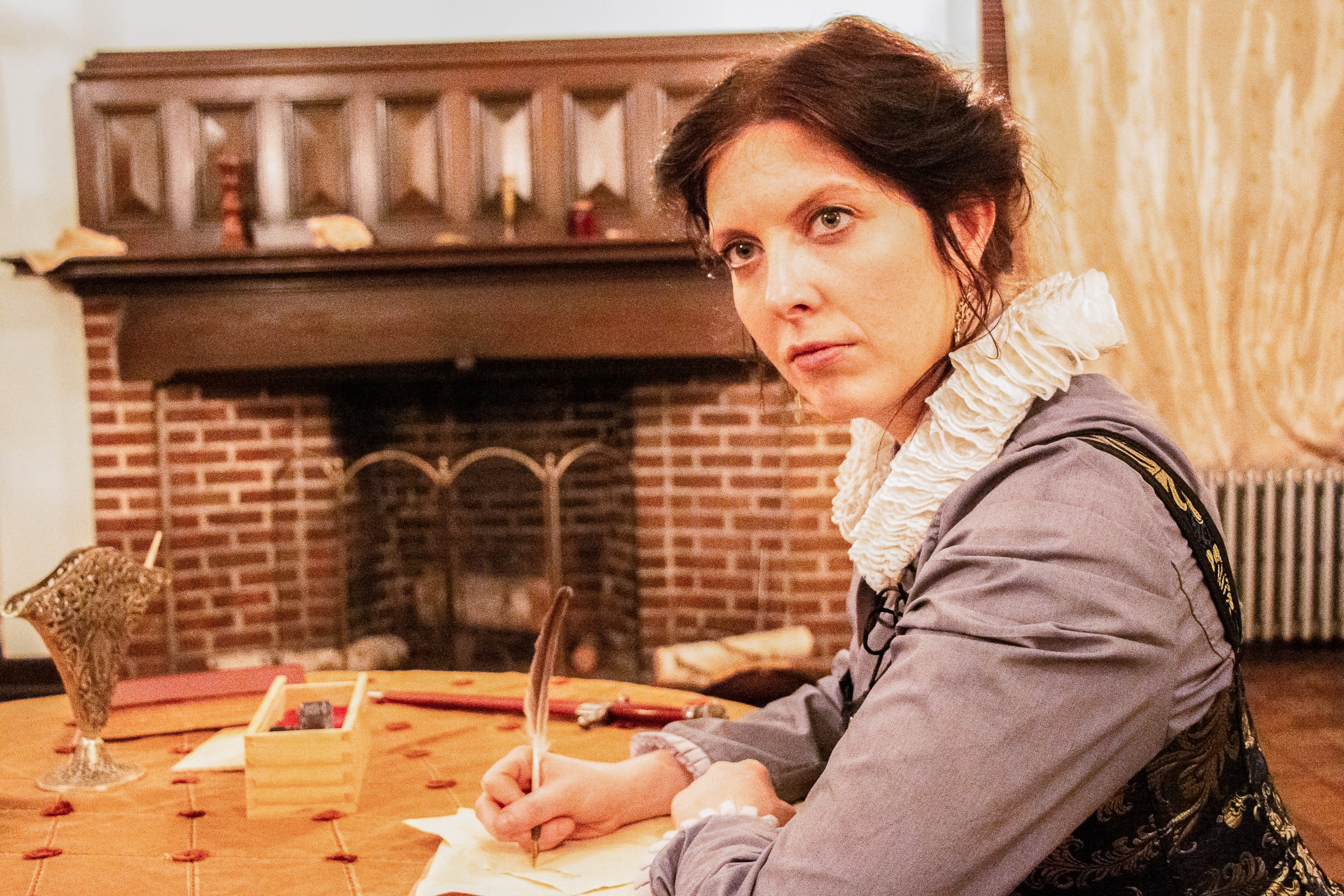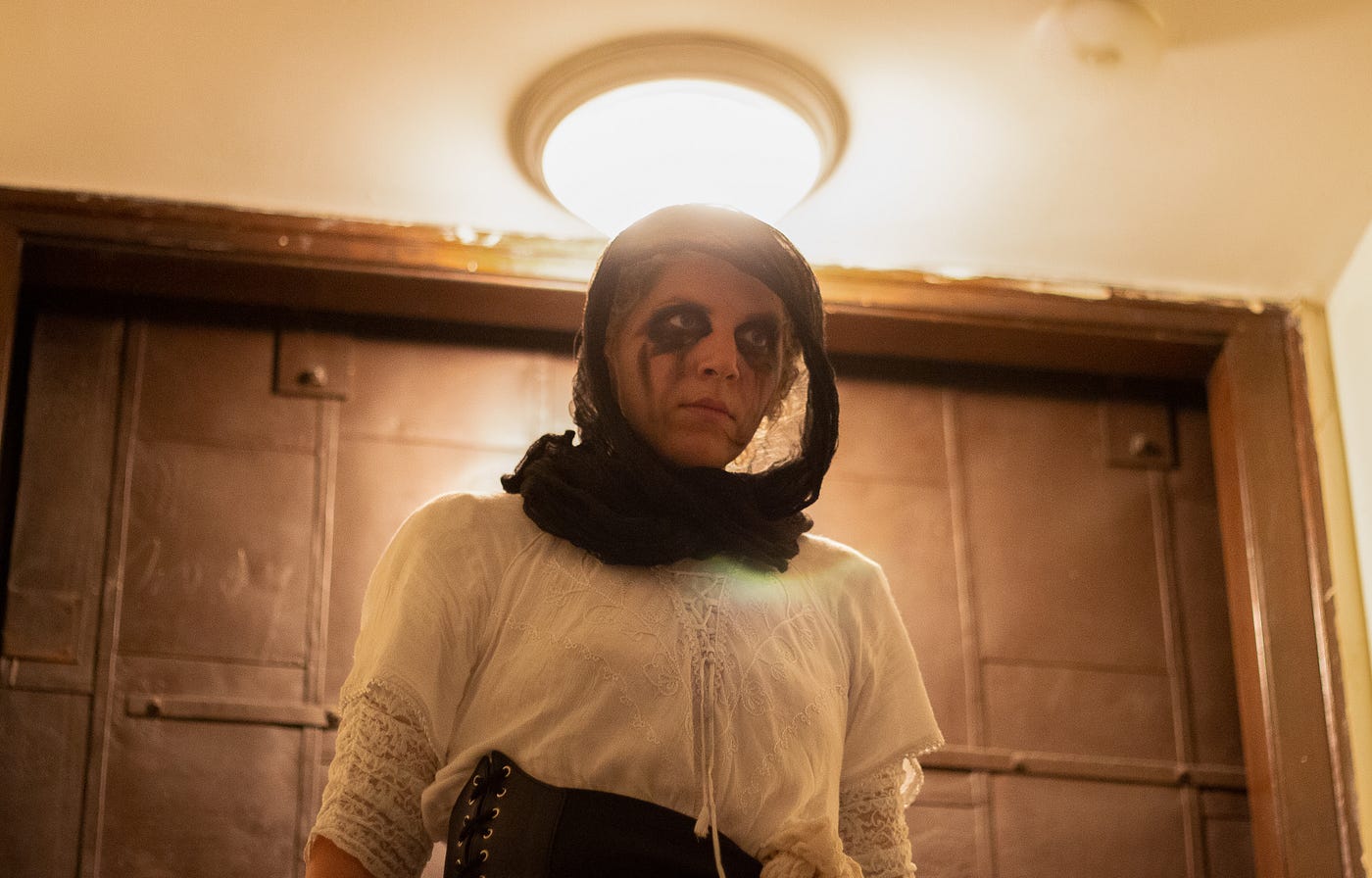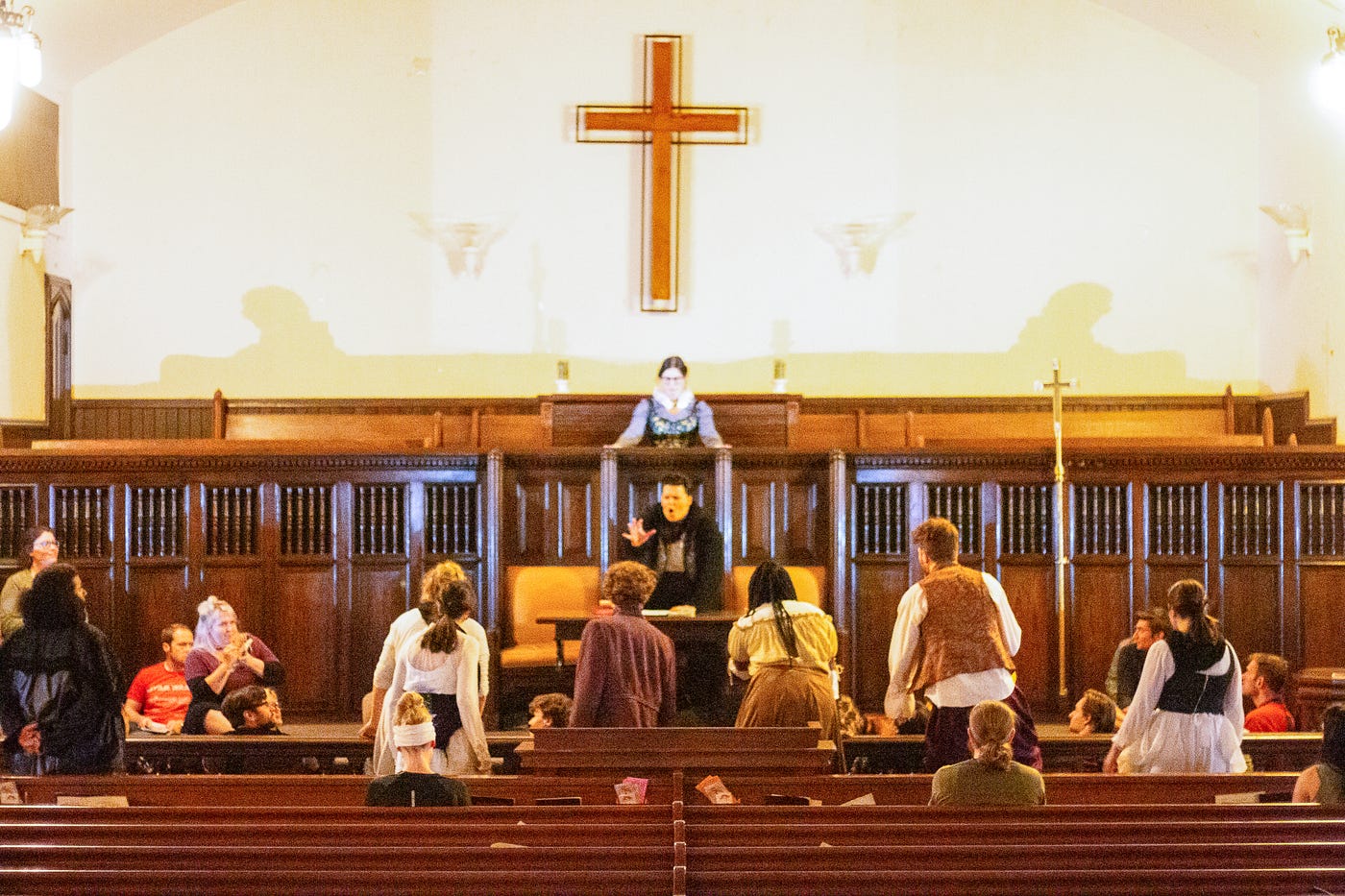A Questionable Verdict With The Barrens Theatre Co.’s ‘Bloody Bathory’ (Review)
Story and structure overshadow other elements in the sandbox experience


(The following contains moderate spoilers.)
Out of all the civic duties we as citizens of the USA are expected to perform, I dread jury duty the most. Yet it’s not finding time off of work or being sequestered in a cramped, drab room for days at a time that worry me. My real concern is living up to the responsibility required of being a good juror; one who makes a decision from the facts alone, without any personal bias or exterior influences swaying judgment. I figure that I’d absolutely be the person preventing eleven angry people from going home, simply because we’re not issuing a judgment solely on the facts. And had that been possible, it’s what I would have done when debating the verdict the audience was asked to issue in Bloody Bathory. (More on that later.)
Despite it not yet being Halloween, a frightful tension fills the air as I make my way to see Bloody Bathory. The night is freezing cold and I spy an oddly large number of police cars patrolling the streets of Edgewater tonight. I soon arrive at Epworth United Methodist Church, a massive stone church filling the entirety of a short city block, welcomed to wander around before the experience begins. The nave of Epworth United is wide, having two aisles dividing the pews into three sections, and is so tall that the dim lighting dies out long before reaching the ceiling. I sit down in a pew and face the altar that’s surrounded by a waist-high wooden wall. The choir looms over me, making anything godly seem far removed from a mere mortal’s touch. I’ve left behind modern Chicago for the 16th century, the sense of aged history vibrating through every inch of the church.
We’re soon directed back to the main entrance where people are banging at the doors, shouting and begging to be let in. Another audience member and I open the doors, letting in those dressed as royalty, clergy, and villagers. One of the last people to enter provides the rules of play, telling us to remain silent unless spoken to, and take note of everything for the audience will be asked to pass judgment on the evening’s events later. The last instruction sets a very high expectation that when I’ll be asked to exercise agency, it will be meaningful and impact the story.
The audience is then thrust into the middle of a trial for Elizabeth Bathory (Millie Rose), a Countess in Transylvania. The Countess sits in the choir as the Judge (Maggie Miller) presides on the altar, a body at their feet, as villagers shout claims that the Countess is a murderer. But behind those cries for justice, there’s an implied belief that the Countess is an inhuman monster who uses her young female victim’s blood for unsavory and ungodly things.

Then by some unseen magical force, the air is taken out of everyone and they begin to twist and moan, some of them beckoning audience members to follow them. I follow two villagers deeper into another chapel and they resume as if nothing has happened. As I follow these two villagers, their dialogue and interactions with others denotes that we’ve traveled back in time to experience the events leading up to the trial, so the audience can gain firsthand knowledge of what’s transpired. But after watching a group of characters come together, I elect to leave the two villagers behind, and follow Countess Bathory instead. That is, until I change it up again, which soon sets the tone of bouncing around from character to character in this sandbox experience.
Get Patrick B. McLean’s stories in your inbox
Join Medium for free to get updates from this writer.
SubscribeSubscribe
There’s tremendous depth to the world of Bloody Bathory; it drips of drama and meaty stakes. Every character I follow has a secret agenda that ranges from lofty to pious, yet each one feels personal and relatable, allowing me to deeply invest in everyone’s stories. The plight of the villagers is where I’m most moved when their plans are dashed or they suffer a terrible fate. Each time I started a new scene or even stumbled into a new one, within moments I was able to tell what’s going on and what each person was trying to accomplish, even if it’s the first interaction I have with them. This is no small feat by writer Millie Rose (who also plays the Countess). The show crafts such tightly packed character work into each moment, allowing the supernatural elements that slowly begin to emerge full credibility during the events of Bloody Bathory.
It’s only when we’re eventually called back to sit in the pews and asked to decide the fate of the Countess, that I’ve no idea what to do. To provide context, Bloody Bathory brings the audience back to the trial multiple times to hear from different characters, followed by a period of sandbox exploration each time. In the moment, I appreciate this structure as it guided my attention on what to focus upon during the open exploration scenes. But each time we reconvened for the trial, different parties had different grievances with the Countess, some of which had nothing to do with murder. There’s an implication that the body of the woman laying at the Judge’s feet is the murder that instigates the trial, but the events that follow upend this expectation.

When the moment of deliberation begins, the Judge asks the audience if we find the Countess guilty of…a decades-old allegation of murdering a group of women. These events are only mentioned and seemingly not witnessable for the audience during the performance. Everything I experienced during my performance appeared to be moving forward linearly towards the trial. But the timeline at large is now in question because the two villagers I followed in the beginning also experienced a fate would have prevented them from taking part in the trial in the first place. So does that mean the trial is taking over a longer period of time? Or is each time we gather as a jury is as a jury for a different, separate trial, perhaps at a different period in time? And as for the other characters, I discover the actor playing the Judge has a dual role of a character with a personal vendetta against the Countess. Is the Judge a real trial judge or is this a sham trial from a person impersonating a judge, meaning that the Countess isn’t getting a fair trial at all?
With all these questions swirling in my mind, my moment of agency is crippled with not a deliberation of the facts but one of confusion as to what I was being asked to decide in the first place. It’s with great reluctance I cast my decision in the Countess’ fate, doing so out of obligation because that’s what the moment called for rather than feeling any ownership around my choice. It was deflating having spent time with the Countess, witnessing the struggles she was going through on so many fronts, only to choose her fate with such a cavalier attitude.
While I had a deeply enjoyable time following the characters of Bloody Bathory clash with one another, creating palpable drama that I seamlessly and easily invested in, I had no sense of how to weigh what I witnessed against what I was being asked to do as a jury member. Terror, excitement, and tragedy are abound in Bloody Bathory. But as to the manner of if the audience had true agency within the story-world, and how their choices had consequences, well, that’s a question that requires further deliberation.
Bloody Bathory runs through November 16 in Chicago. Tickets are $27.
NoPro is a labor of love made possible by our generous Patreon backers. Join them today!
In addition to the No Proscenium web site, our podcast, and our newsletters, you can find NoPro on Twitter, Facebook, YouTube, Instagram, in the Facebook community Everything Immersive, and on our Slack forum.
Office facilities provided by Thymele Arts, in Los Angeles, CA.